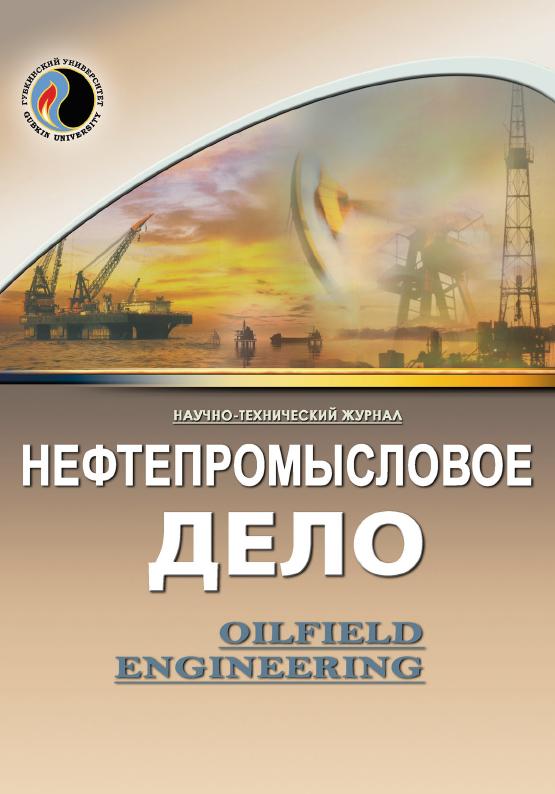Experience of using proxy modeling instruments to improve the efficiency of oil reservoir water-flooding system
UDC: 622.276.1/.4.001.57:622.276.43
DOI: -
Authors:
BORISOV MAXIM I. 1
1,
POLIN ILYA A. 1
1,
NOVIKOV VLADIMIR A. 1
1,
ZAITSEV ROMAN A. 1
1,
FILATOV MAXIM A. 1
1
1 LUKOIL-Engineering, Perm, Russia
Keywords: proxy modeling, losses reduction, reservoir pressure, water-flooding system, hydrodynamic simulation, oil production
Annotation:
The authors of the article consider the validation of the proxy modeling approach aimed at developing measures and recommendations to reduce oil production losses from reservoir pressure depletion. The main methods used for analyzing the efficiency of the water-flooding system and developing proposals for its improvement as well as the advantages and disadvantages of each method are considered. Proxy modeling is an approach that allows solving optimization tasks related to the water-flooding system qualitatively and in a minimal amount of time. The authors of the article have developed and presented an algorithm for modeling and conducting calculations on proxy models, which involves testing thousands of different sets of wells’ injection capacities and determining candidate wells for injection. Based on the proposed algorithm, four most efficient options have been identified. Additionally, a techno-economic evaluation has been carried out, demonstrating the high efficiency of the proposed measures aimed at reducing oil production losses from reservoir pressure depletion. The most effective option based on techno-economic calculations, which includes selecting an optimal set of wells’ injection capacities and converting one of the wells to injection, is characterized by reducing oil production losses by 44,6 thousand tons, increasing reservoir pressure to 11,8 MPa and achieving a net present value of 154,5 million rubles over a ten-year forecast period.
Bibliography:
1. A new approach for the demonstration of acidizing parameters of carbonates: experimental and field studies / V.A. Novikov, D.A. Martyushev, Y. Li, Y. Yang // J. of Petroleum Science and Engineering. – 2022. – Vol. 213. – P. 110363. – DOI: 10.1016/j.petrol.2022.110363
2. Geologo-promyslovyy analiz razrabotki i monitoring vyrabotki zapasov / I.V. Akhmetzyanov, V.V. Nikiforov, Ya.D.B. Atse // Neftegazovye tekhnologii i novye materialy. Problemy i resheniya. – 2019. – S. 114–119.
3. Gladkov E.A. Geologicheskoe i gidrodinamicheskoe modelirovanie mestorozhdeniy nefti i gaza: ucheb. posobie. – M.: Izd-vo TPU. – 2012. – 99 s.
4. Hompson J.F. Grid generation techniques in computational dynamics // AIAA J. – 1984. – Vol. 22. – P. 1505–1523.
5. Aziz K. Ten golden rules for simulation engineers // J. Petrol. Technol. – 1989. – Vol. 41, Issue 11. – P. 1157.
6. Primenenie proksi-modeley pri prognozirovanii parametrov razrabotki neftyanykh zalezhey / Zh.T. Zhetruov, K.N. Shayakhmet, K.K. Karsybaev [i dr.] // Vestn. neftegazovoy otrasli Kazakhstana. – 2022. – T. 4, № 2. – S. 48–57. – DOI: 10.54859/kjogi108021
7. Sobol’ I.M. Chislennye metody Monte-Karlo. – M.: Nauka, 1973. – 312 s.
8. Metodika tekhniko-ekonomicheskoy otsenki effektivnosti geologo-tekhnicheskikh meropriyatiy / D.I. Polukeev, R.R. Gabdrakhmanova, A.N. Lesnoy [i dr.] // Prilozheniya k ukazaniyu ot 31.08.2018 № RM-139. – M.: OOO "LUKOIL-Inzhiniring".

